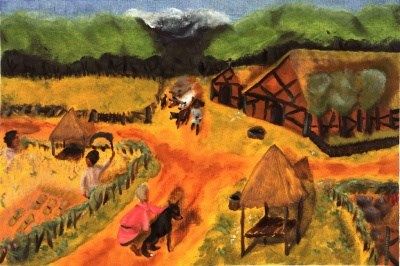Middeleeuwse waterput
Contact
The hamlet of Boekent originated at a junction of ancient roads. Traces of habitation have been found as early as the 13th century. In 2005, for instance, when excavating a construction pit on the Oude Bakelse weg, a medieval tree-trunk water well was found. Some post marks and an inheritance ditch also show habitation. Through a number of pottery shards, the dating was set at the beginning of the 13th century.
A tree-trunk water well consists of a hollowed-out tree trunk buried upr…
The hamlet of Boekent originated at a junction of ancient roads. Traces of habitation have been found as early as the 13th century. In 2005, for instance, when excavating a construction pit on the Oude Bakelse weg, a medieval tree-trunk water well was found. Some post marks and an inheritance ditch also show habitation. Through a number of pottery shards, the dating was set at the beginning of the 13th century.
A tree-trunk water well consists of a hollowed-out tree trunk buried upright in the ground. The hollow inside of the well is obviously not filled with earth and reaches into the groundwater that then fills the well upwards. A tree suitable for such use must of course be of a size, this oak had a diameter of 130cm. An oak, in the acidic groundwater of the Peel, reaches such a size only after about 200 years. Trunk wells were invented in prehistoric times but were still commonly used in the Middle Ages.
The well was salvaged by the Gemert archaeological working group and is currently on display at Gemert town hall.

